Here is everything you’ll ever need to know about travel in Aruba, all in one place. This complete Aruba Travel Guide covers what to see in Aruba, currency and costs in Aruba, can’t miss attractions in Aruba, and what to pack for Aruba.
Pin Me for Later!
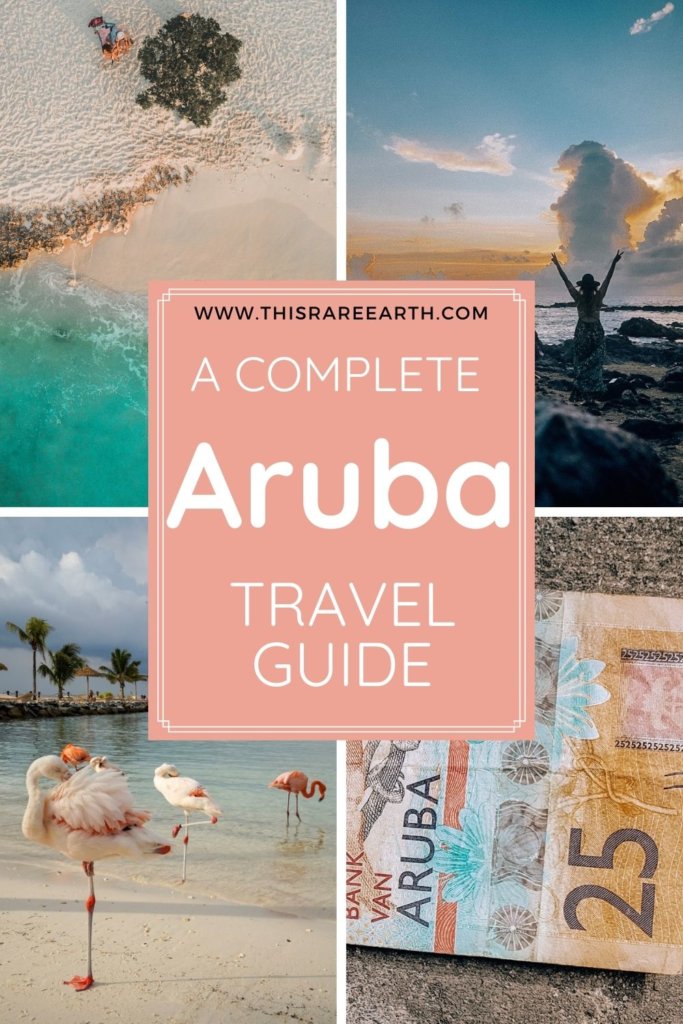
Picture this; I’m standing on the rocky eastern shore of Aruba, taking in a stunning view that I never expected to see.
The milky blue tidepools, tucked haphazardly in between black lava rocks, are surreal. Beyond is the glowing cotton candy sunrise, casting crimson and pink across the sea, which seems to be just waking up.
After visiting the Dominican Republic, and the Bahamas, and Puerto Rico – I knew that this Caribbean country would be pretty. I knew the waters would be blue and the sun would glow golden. But I just wasn’t prepared for this.
Aruba is the kind of place that will give you more than you asked for. If you need some assistance in planning for the best vacation possible, you will find it here.
Buckle up, your complete Aruba Travel Guide begins now!
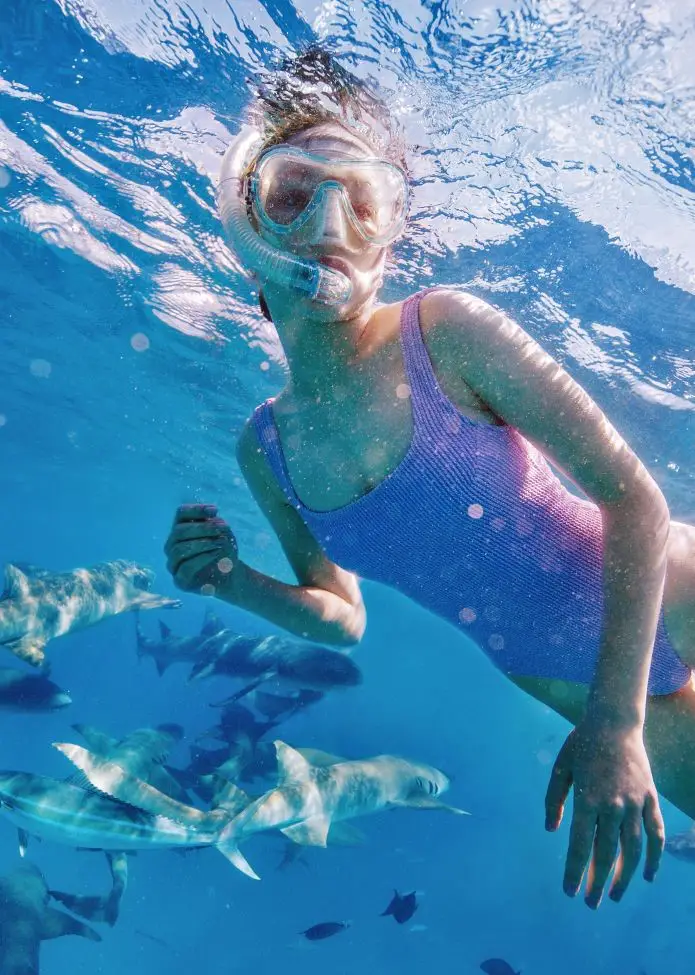
Multi-Beach Aruba Snorkeling Tour!
✅ Stop at world class beaches, Mangel Halto and Baby Beach!
✅ See angel fish, parrot fish, turtles, and more!
✅ Get roundtrip hotel transfers.
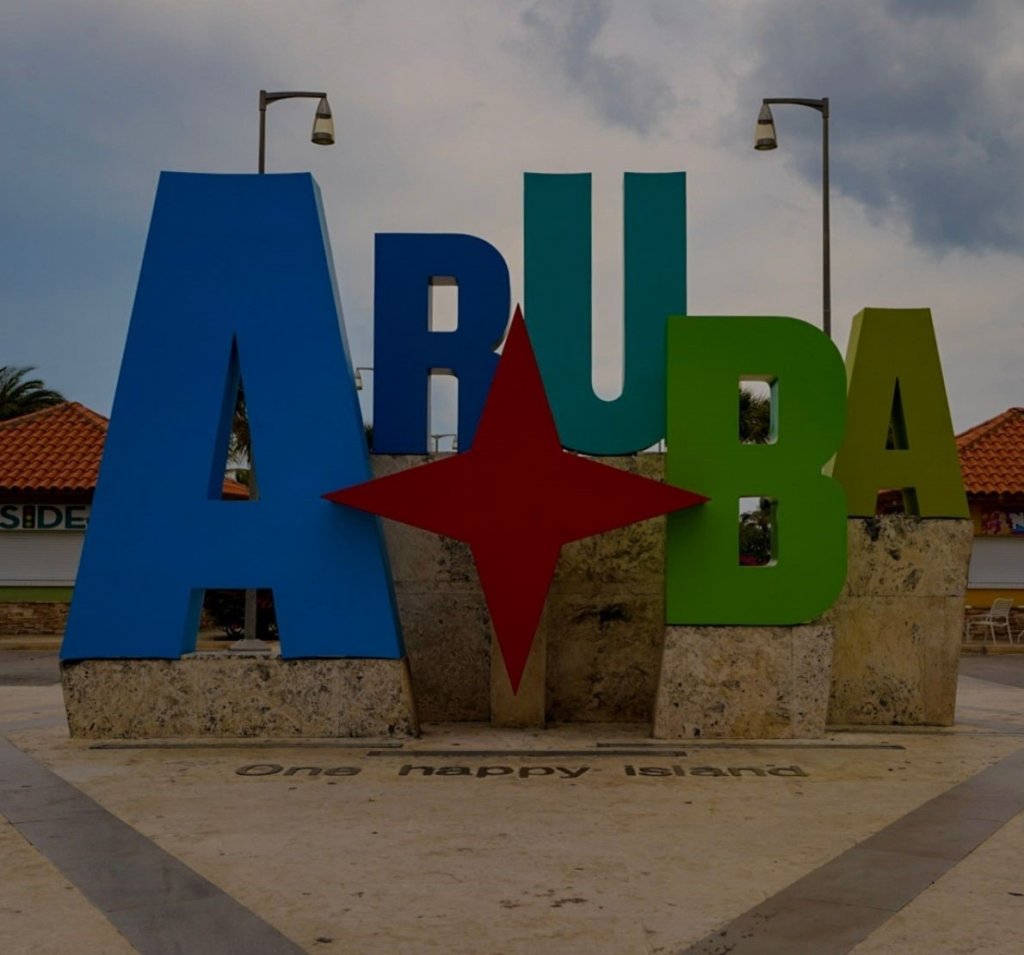
Full Day Aruba Sightseeing Tour!
✅ Get a great introduction to the island on this full day tour!
✅ See the iconic California Lighthouse, Ayo Rock Formations, Gold Mill ruins, and more.
✅ Stop at Baby Beach for an optional swim.
An Aruba Travel Guide: Planning the Perfect Trip
I recently flew to Aruba on an impromptu but much-anticipated trip to the Lesser Antilles. It had been in my head for some time – I need to check out Aruba.
I’m not even sure where that compulsion came from. But boy, am I glad it listened. There is a lot to see and do within this small country’s borders!
Here is everything you need to know before you go!
Where is Aruba?
Located in the southern part of the Caribbean, Aruba sits just 48 miles to the west of Curaçao and a mere 15 miles north of Venezuela.
Along with its neighbors Bonaire and Curaçao, this trio of islands are referred to as the “ABC islands”. In 1986, this nation acquired the formal name of “Aruba” and became a constituent country within the Kingdom of the Netherlands.
Learn more facts about Aruba’s location and geography here!
When is the best time to visit Aruba?
Aruba sits just north of the equator, out of the dreaded hurricane belt within the Caribbean. This means that Aruba (and the rest of the ABC’s) are pretty lucky in avoiding any hurricane devastation that some of their island neighbors have endured!
Aruba experiences an uptick in rain beginning in September and lasting through December. But, the rain typically comes in short bursts.
My first visit to Aruba was in September and October, and I honeslty have zero complaints to report.
The best months to visit Aruba to avoid rain are from January through August. The weather is tropical year round, but not extreme, with a fairly constant temperature of 82-90 degrees Fahrenheit year round.
The busy tourist season in Aruba spans from January to March, making hotel room prices soar. Accommodations and even certain activities can cost a bit more at this time.
My personal recommendation is to travel to Aruba in September. During this shoulder season, the heavier rains will typically not yet be present, and you are more likely to catch discounts on hotels and activities.
What Language is spoken in Aruba?
Dutch, English, and Papiamento are all spoken in Aruba.
Is Aruba safe?
Yes, I felt safe the entire time I was here! I traveled solo and didn’t spend even one night in a resort. I was out and about among the locals, driving a rental car the entire time.
Check out my post on solo female travel in Aruba for more information.
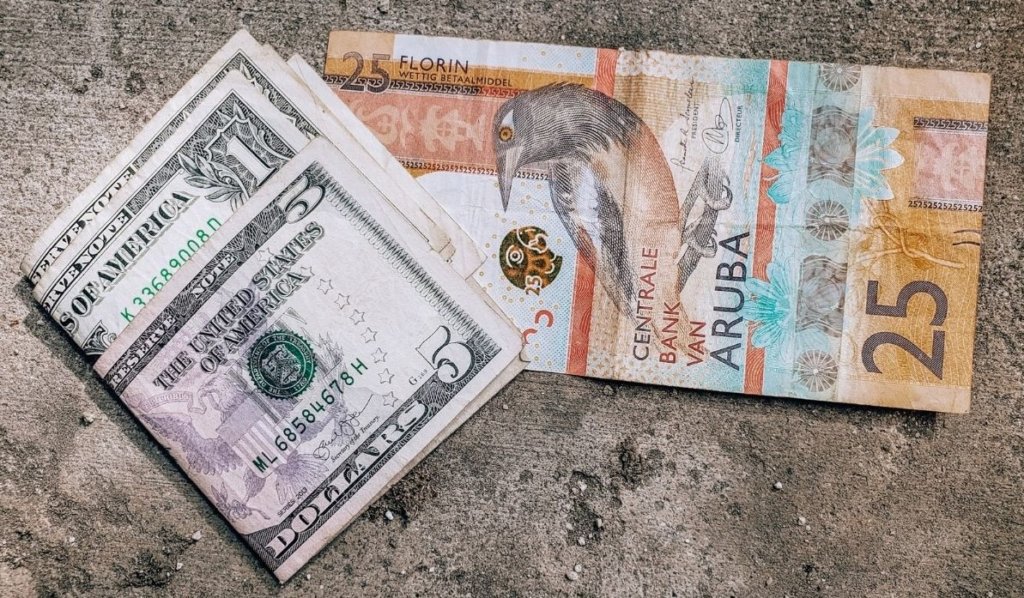
Currency and Costs in Aruba
Currency in Aruba: Aruban Florin
Current Exchange Rate: $1 USD = $1.80 AWG
Are US Dollars Accepted? Yes, almost everywhere. However, sometimes you will be charged more to pay in USD.
Aruba, like most islands in the Caribbean, can be quite expensive. There is no shortage of fancy resort hotels and beachfront accommodations to throw money at.
However, it is possible to visit Aruba without breaking the bank! It just depends what your priorities are.
I personally chose not to stay in a beachfront property. I was planning on renting a car in Aruba regardless of where I stayed, to explore the hidden corners of the island.
GET THE BEST CAR RENTAL PRICES HERE!
Additionally, since Aruba is so small, staying beachfront was not a priority for me. I would be able to get anywhere quickly with my rental car. I could drive to the various beaches of Aruba and Arikok National Park easily.
Accommodations in Aruba
I was able to get a small studio apartment equipped with a kitchen and full sized bed for only $40 USD per night in Oranjestad. This worked as a perfect base for me.
Aruba is such a small island – roughly 20 miles long and 6 miles across – that I could drive anywhere in under an hour.
I ALWAYS GET THE BEST HOTEL PRICES HERE!
Depending on your tastes and priorities, you can book hotels for anything from around $25 USD per night for a dorm bed in a hostel up to and beyond $700 USD for a luxury hotel.
So, it is possible to be budget-minded in Aruba, though you will not find the same bang for your buck as you would in, say, Bali.
🗺️ Planning Your Next Big Trip? 🗺️
This Rare Earth now offers Custom Itinerary Services for destinations across the world! If you are feeling overwhelmed while planning your next big trip, or don’t know where to start, I can likely help. Fill out the form below to learn how we can create a fully customized itinerary tailored to your unique travel preferences and needs!
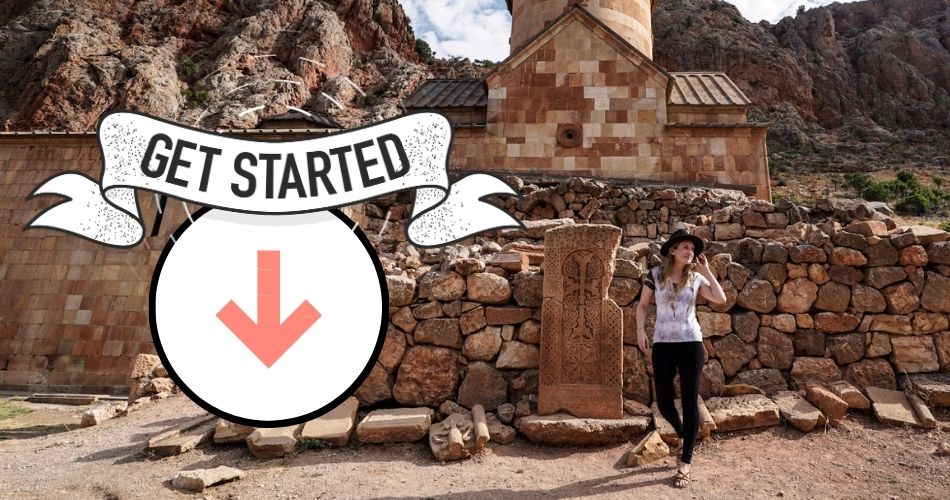
Food in Aruba
Much like lodging, food prices can vary depending on your tastes and budget.
The most common food types you will see in Aruba include Dutch fare like waffles and pancakes, healthy and/or vegan smoothie cafes, and Caribbean-influenced dishes.
Local Food Spots ($10 – $25)
While I did cook most of my meals, I ventured out to a few local spots on days that I was on-the-go all day.
I got some great meals for cheap prices in Aruba. for example, I had a great $10 USD vegan burrito at Happy Bowl inside of the Renaissance Marketplace. On another day, I had a very filling $12 USD breakfast at a small roadside stop.
Restaurants & Seafood ($25 and up)
Depending on what you order, the larger restaurants can cost anywhere from $25-$50 USD for a large meal.
I’ve seen Zeerovers recommended over and over for freshly caught seafood, though I cannot vouch for it myself. Other seafood and resort type restaurants are plentiful around the island.
You May Also Like: Can You Drink The Water in Aruba?
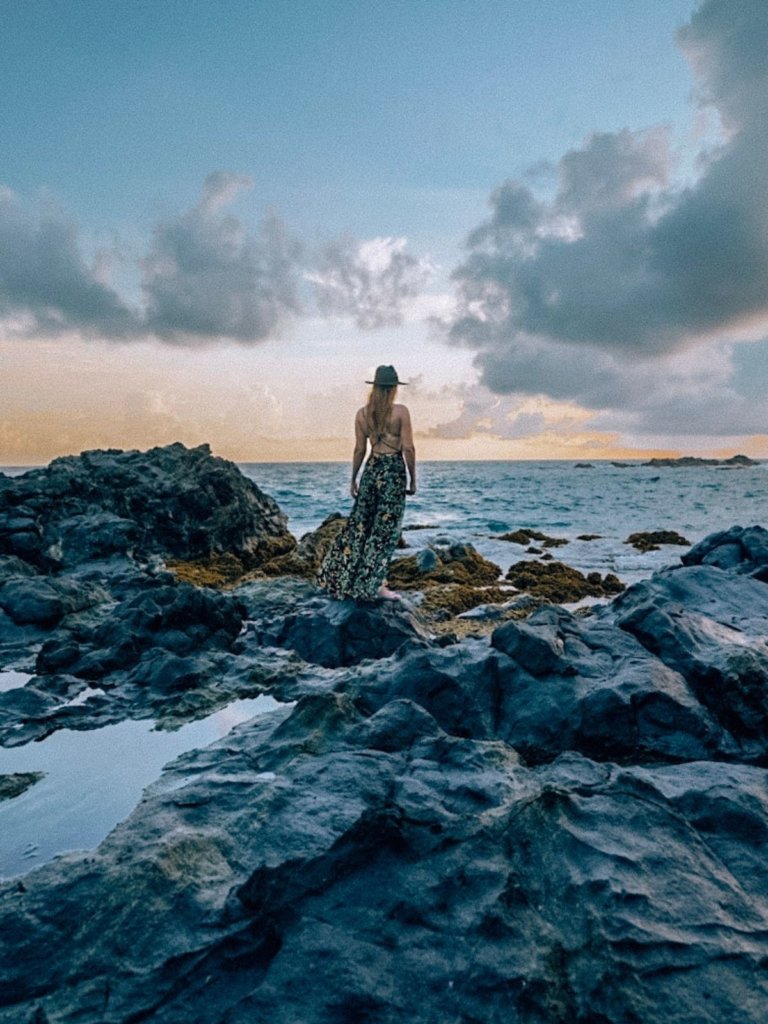
What to see in Aruba
Pro Tip: If you are a first time visitor to Aruba, a full day guided island tour is a great way to get your bearings and see what sights you would like to explore further, later. You will hit all the best stops on this one, from beautiful beaches to ruins to rock formations.. BOOK YOUR FULL DAY ARUBA SIGHTSEEING TOUR HERE!
Aruba is well-known for its white sandy beaches and clear turquoise waters.
On the western and southern coasts of the island, these beautiful beaches are relatively sheltered from aggressive currents and instead present fairly calm and relaxing coasts.
On the northern and eastern coasts, the rocky shores have rough waters and waves that batter the lava and coral covered shores. As a result, these areas have been left largely untouched and feature a violent but natural beauty I was not fully expecting.
You will also find the desert-beauty known as Arikok National Park in the northeast. Here you can go hiking, explore Aruba’s caves, and see very unique island landscapes.
Oranjestad and Noord – the two most popular areas on the island for tourists – are home to famous beaches like Eagle Beach and Palm Beach. While these spots are pretty, they were not the most visually stunning options by any means!
Check out my in-depth list of the most stunning beaches in Aruba if you’re looking to get outside of the tourist center. I highly recommend Baby Beach to the south and Malmok Beach to the north, not to mention the rough Dos Playas to the east (but not for swimming.)
Also, no trip to Aruba is complete without a visit to the famous Flamingo Beach.
If you are looking to explore more than just the beaches, hop over to this post about the most unique things to do in Aruba.
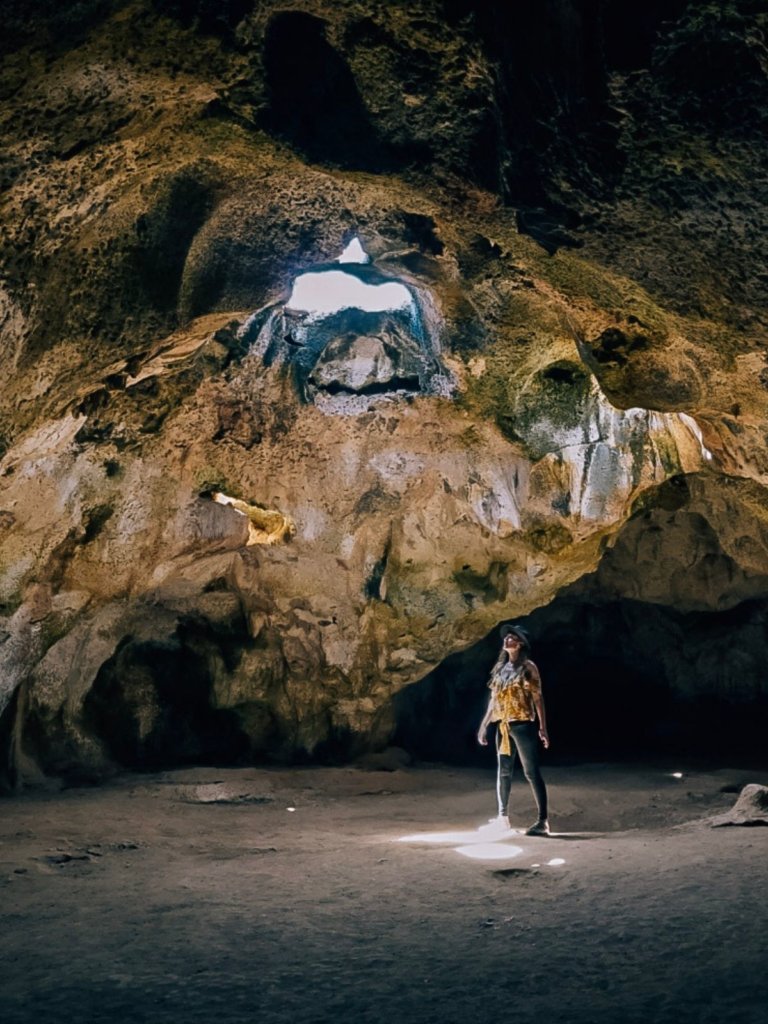
How to get around Aruba
As I previously mentioned, my plan was to rent a car in Aruba, and I am so glad that I did.
The amount of driving and exploring I did in that rental ended up to be much cheaper than either hiring a guide or taking taxis .
GET THE BEST CAR RENTAL PRICES HERE!
That said, if you would rather avoid the hassle of driving in a foreign country, taking taxis and tours might make more sense for you. I have a full guide on transportation in Aruba to help you decide.
One thing to note, taxi prices in Aruba are regulated by the government. You will not need to haggle over pricing or worry about being price-gouged for your trip.
Additionally, you could use public transportation via the public bus. The Arubus service offers daily rides all along the hotel strip.
Buses run every 15 minutes from 5:45 am through 6pm. After 6pm, buses run every 40 minutes until 11:30 pm. Current routes, schedules and prices can be found here.
One last option would be to rent bicycles and bike around the island. I think this is a reasonable option in the main tourist areas, but not so reasonable if you need to go very far.
Pro Tip: The Aruba sun is no joke. Plan your bike rides around the midday heat. Always wear a wide brim hat, sunscreen, and carry your reusable water bottle for hydration.
You May Also Like: Solo Female Taxi Safety Tips
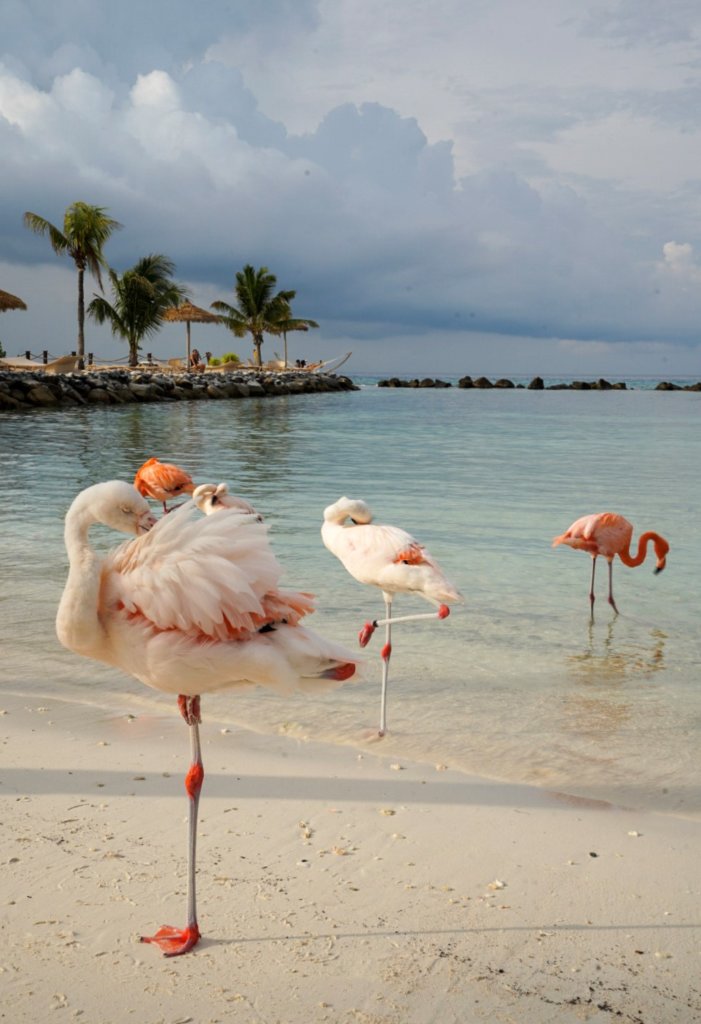
How long should I spend in Aruba?
This question is of course subjective, but I would recommend around 7 days in Aruba.
For those looking for a relaxing beach or resort vacay, one week in a beachfront hotel with a couple of excursions thrown in should be fabulous for you.
For those looking to explore the various sights around the island, I would still say one week is ideal.
My first trip to Aruba was just under one week, and if I hadn’t needed to return on a set date, I could have stayed longer. I felt like I could have used at least one more day to revisit some key spots or even just try to relax (not my strong suit!)
What to pack for Aruba
No Aruba travel guide would be complete without discussing what to pack. Aruba is hot and fairly humid, so I suggest packing loose clothing that breathes and allows air flow.
While I do have a complete Aruba packing list available, here are some of the basics.
On beach days I opted for the following:
- a swimsuit, of course
- a light fabric kimono cover-up
- loose shorts or a lightweight romper
- reef-safe sunscreen (“normal” SPF containing Oxybenzone is banned in Aruba.)
- sunglasses and a wide-brim hat (this adjustable-size hat is the exact one I brought)
On hiking or exploring days I recommend the following:
- my most favorite trekking sandals of all time
- basic leggings or capri leggings
- a lightweight tank top or a tee shirt
- flowy palazzo pants
I would also recommend bringing a reusable water bottle, as the tap water in Aruba is safe to drink! I highly recommend the Hydro Flask because it is pretty lightweight and will keep your beverage cold for hours!
***
And there you have it! All of the background and basics you need to plan for the perfect Aruba vacation. I hope that this complete Aruba travel guide helps you prepare for a great time on the island.
Looking for more Aruba inspiration? Check out these posts!
- A Complete Aruba Travel Guide
- The Ultimate Aruba Packing List for Women
- Unique Things To Do in Aruba
- Is Aruba Safe for Solo Female Travel?
- Visiting Quadirikiri Cave in Aruba
- Everything You Need to Know about Arikok National Park
- Visiting Flamingo Beach, Aruba on Renaissance Island
- Is There Uber in Aruba? A 2023 Transportation Guide
- Can You Drink The Water in Aruba?
- The Best Beaches in Aruba
- Are There Sharks in Aruba?
- Is Aruba in South America?
Have you been to Aruba? What was your favorite part?! Let me know below!
Pin Me for Later!
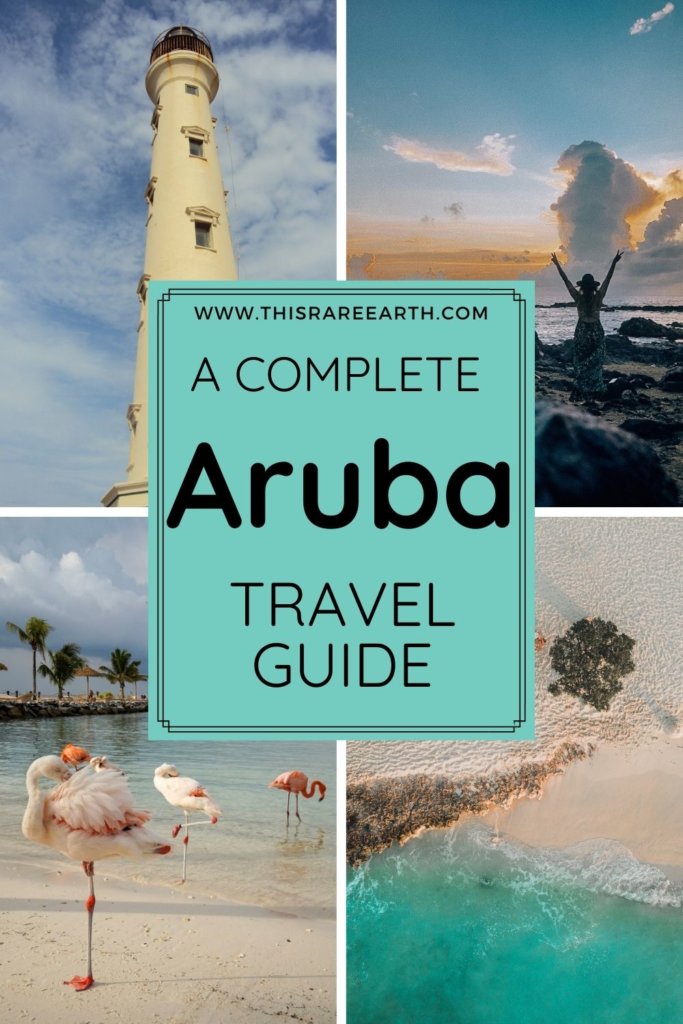




Leave a Reply